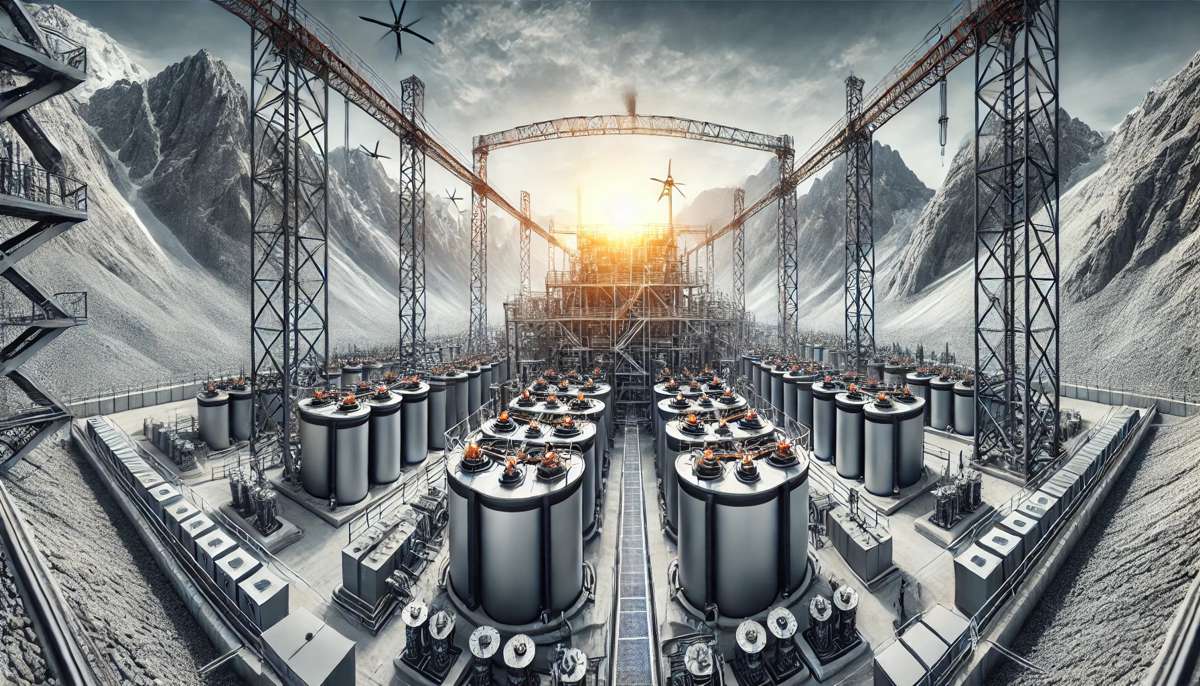Salt Batteries are the Future of Safe, Sustainable Energy Storage
In the annals of automotive history, the 1997 Mercedes-Benz A-Class became famous for tipping over during the “elk test.” As it turns out, the incident had roots in a simple yet monumental design switch. Originally intended to be an electric vehicle, the A-Class would have relied on a robust salt battery, which provided stability by placing its weight low in the car. The switch to a lighter combustion engine not only eliminated the battery but also raised the car’s center of gravity, with unintended consequences.
This “what if” moment shines a light on a lesser-known but compelling technology: the salt battery. While largely overshadowed by lithium-ion batteries in electric mobility, salt batteries bring unique benefits that make them a game-changer for stationary power storage and applications where safety and durability are paramount.
What Makes Salt Batteries Stand Out?
Salt batteries use a unique, non-flammable, solid-state design that differentiates them from other energy storage solutions. Unlike lithium-ion batteries, which immerse the cathode and anode in a liquid electrolyte, salt batteries use a ceramic electrolyte of sodium aluminium oxide, often called beta-alumina, that keeps the anode and cathode separate.
This setup brings a long list of benefits:
- Improved Safety: The solid electrolyte, which doesn’t burn, makes salt batteries inherently safer.
- Enhanced Durability: The separation of anode and cathode increases the battery’s lifespan, a boon for applications requiring longevity.
- Temperature Resilience: Capable of operating at around 300°C, salt batteries are less susceptible to temperature fluctuations than their lithium-ion counterparts, making them ideal for critical infrastructure like remote cell towers and emergency power.
The design’s robustness has already drawn interest from industries needing ultra-safe power storage, such as mining, tunnel construction, and offshore oil and gas platforms.
Behind the Technology
The story of salt battery innovation took a major leap in 2016 when Ticino-based manufacturer HORIEN Salt Battery Solutions (previously FZSoNick) partnered with Swiss research institute Empa. With funding from Switzerland’s Innosuisse and later the Swiss Federal Office of Energy (SFOE), they embarked on an ambitious mission: refining the salt battery’s ceramic electrolyte for greater stability, efficiency, and cost-effectiveness.
Research at Empa revealed the challenges and rewards inherent in salt battery chemistry. Meike Heinz, a researcher from Empa’s Materials for Energy Conversion laboratory, explain: “The assembly of salt battery cells for research purposes is very complex and there are hardly any studies on their exact mechanisms of action. That’s what makes these projects so interesting for us: We can learn a lot and develop our understanding together with our industrial partner.” With the effort to improve the battery’s efficiency and lifespan, Empa researchers and HORIEN developed an advanced understanding of salt battery mechanics, improving upon an already durable and reliable system.
A New Approach to Battery Storage
Salt batteries may not be the go-to choice for electric vehicles, but their high-temperature resilience and long service life make them well-suited for stationary power applications, especially where safety is key. However, operating at 300°C isn’t without drawbacks; salt batteries require external heating to reach optimal temperatures, which raises questions of energy efficiency.
Yet, thanks to their unique chemistry, salt batteries can be surprisingly cost-effective in the right setup. The heat generated during charging and discharging often helps maintain temperature, reducing the need for external heating in larger battery arrays. “Depending on the application, it’s more efficient to keep a battery warm than to cool it,” says Heinz. Empa researcher Enea Svaluto-Ferro adds, “In an optimal system, a large battery can heat itself.”
Sustainable Chemistry: Tackling Raw Material Concerns
With today’s push for sustainable, non-toxic materials, salt batteries have a significant edge over lithium-ion counterparts. Constructed from abundant raw materials like sodium, these batteries are simpler and safer to recycle. Yet, the reliance on nickel for the cathode remains a sticking point, given nickel’s rising classification as a critical material.
As part of their innovation roadmap, HORIEN and Empa launched HiPerSoNick, an SFOE-funded project, to reduce nickel content without sacrificing performance. Finding the right balance proved challenging, as the cell’s composition and microstructure must be finely tuned to work efficiently. Nevertheless, this initiative laid essential groundwork for further reducing or even replacing nickel entirely.
Scaling Up for a Sustainable Future
The European Union’s SOLSTICE project, running until mid-2025, aims to replace nickel with zinc in salt battery cathodes, pushing the technology toward complete sustainability. Despite the technical challenges posed by zinc’s lower melting point, early research has uncovered promising solutions to stabilise the cathode’s microstructure at high temperatures.
Thanks to these advancements, Empa and HORIEN are now exploring additional projects to make salt batteries cost-effective at scale. Their hope? One day, salt batteries could provide reliable, long-lasting power not just to cell towers and critical infrastructure but also to entire neighbourhoods. Imagine salt batteries as a common solution in urban and rural power grids, offering safe, resilient, and sustainable power.
Advantages of Salt Batteries
To sum it up, salt batteries stand out for several reasons:
- Safety: Non-flammable and non-explosive, even at high temperatures.
- Longevity: Enhanced lifespan compared to lithium-ion batteries, with minimal degradation over time.
- Temperature Stability: Operating effectively across a broad temperature range, particularly at higher temperatures.
- Sustainable Materials: Built from readily available and recyclable materials, with ongoing research into reducing or replacing critical raw materials like nickel.
- Stationary Power Applications: Ideally suited for critical infrastructure, such as remote cell towers, data centres, and power backup systems.
These advantages suggest salt batteries could play an essential role in the future of sustainable energy storage, even if they don’t replace lithium-ion batteries for mobile applications.
Paving the Way for Tomorrow’s Energy Landscape
With promising research and strategic industry partnerships, salt batteries are on track to disrupt the energy storage industry. As they become more affordable, scalable, and sustainable, they offer an exciting opportunity for stationary energy storage, particularly where safety and longevity are essential.
From providing power in remote locations to potentially powering neighbourhoods, the salt battery revolution has only just begun. Empa’s ongoing research, coupled with HORIEN’s industry expertise, is charting a new course for batteries, setting a high standard in a world that’s increasingly seeking safe, resilient, and eco-friendly energy solutions.




















